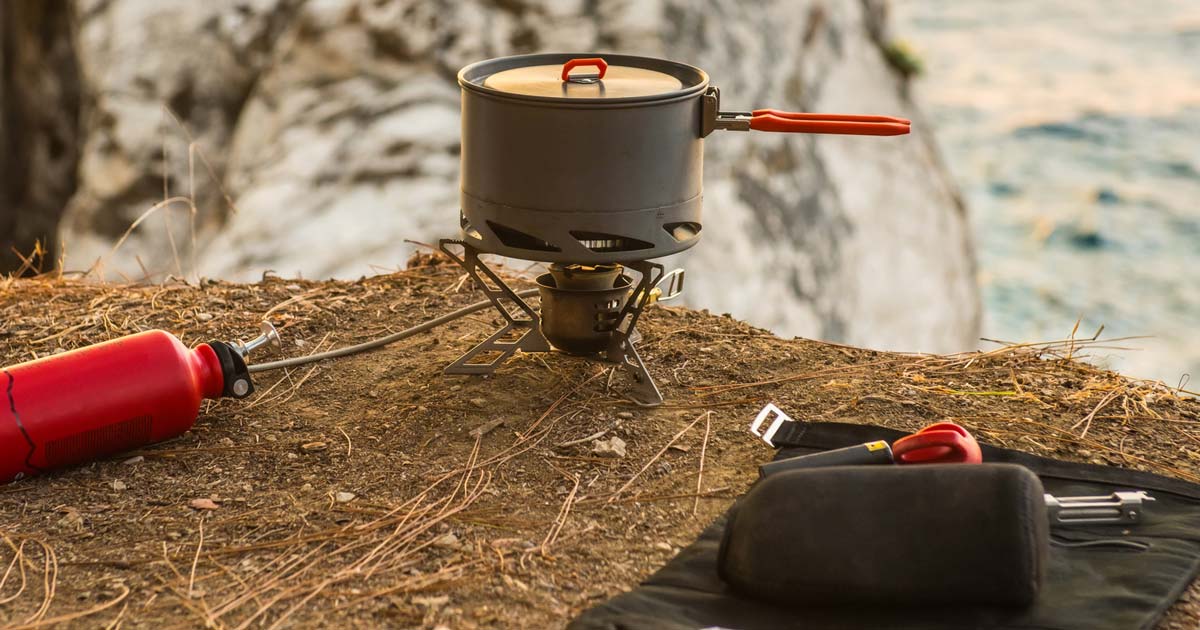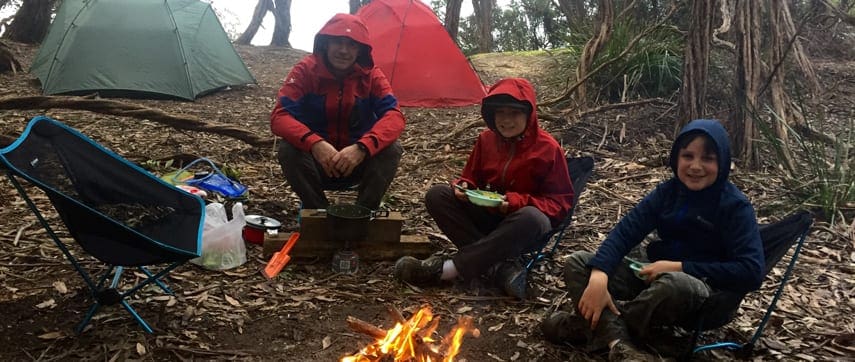The allure of multi-day hikes is undeniable; they are my favourite type of adventure. Immersing yourself in untouched nature for days on end, witnessing hidden landscapes, and pushing your limits under the vast starry sky – it’s an experience that leaves lasting memories. Any time I think of my outdoor adventures, it’s the multi-day hikes that are etched in my memory.
But before you trade day packs for multi-day adventures, there are essential considerations to tackle. While the core principles of safe hiking remain (check out my Day Hike Essentials guide), longer journeys necessitate deeper planning and preparedness. Let’s dive into the key aspects that differentiate multi-day hikes from overnight adventures and day-hikes.
Key things that differentiate multi-day hikes

Advanced navigation
Gone are the days of simple out-and-back trails. Multi-day and long-distance adventures, like Tasmania’s Overland Track, the NT’s Larapinta Trail, and WA’s Bibbulmun Track, often weave through diverse terrain, demanding meticulous route planning. Utilise detailed topographic maps, compasses, and GPS devices, but acknowledge their limitations. It is always wise to carry multiple navigation tools to ensure you are well-prepared. Research potential detours and emergency extraction points due to weather or unforeseen circumstances. For extended journeys, consider advanced GPS features like waypoints, offline maps, and tracking functions. Ensure your navigation tools are updated with the latest data and maps. Remember, battery life becomes crucial – pack spare batteries and invest in power banks. Additionally, practice using your navigation tools before setting out, and consider carrying a backup method, such as a printed route guide or emergency contact list, in case of electronic failures.

Water management
Staying hydrated is critical, especially with increased exertion and changing weather. Carrying sufficient water becomes a strategic game. Research water sources along your route and plan purification methods – tablets, filters, or boiling. Understand your individual water needs and adjust intake based on terrain and temperature. Remember, carrying excess water adds weight, so strike a balance with purification options. It is not uncommon for search and rescue teams to be deployed, as in these two cases on the Larapinta Trail, due to lack of adequate hydration planning.

Food planning
Forget processed snacks. On multi-day hikes, nutritious, high-energy meals are crucial. Consider weight, perishability, and variety when selecting provisions. Research lightweight, calorie-dense options (dried fruits, nuts, energy bars) for easy access on the trail. Learn about camp cooking techniques and invest in lightweight, efficient cookware. Remember, balance weight with delicious, sustaining meals that fuel your adventure. Additionally, it’s important to research the area you will be hiking to understand the fuel types that are allowed and any current fire restrictions. This will help ensure you adhere to local regulations and contribute to fire safety in the region.

Advanced camping skills
Multi-day adventures demand adaptability. Be prepared to set up camp in diverse conditions, from windswept ridges to sheltered forests. Invest in a sturdy, weatherproof tent that suits your group size and the expected weather. Consider your sleep system as well, including a high-quality sleeping bag and pad that provide adequate insulation and comfort. Practice Leave No Trace principles to minimise impact on the wilderness. Learn proper waste management techniques for remote areas, like digging cat holes and packing out all trash. Be adaptable and prepared to adjust your camp setup based on changing weather patterns. Ensure your shelter and sleep system can handle the environmental conditions you may encounter, and always be ready to make adjustments to maintain safety and comfort.

Risk management
Longer journeys come with amplified potential risks. Research potential wildlife encounters in your chosen area and learn how to behave responsibly. For hikes in Australia, be aware of local wildlife and their habits. If you’re planning to hike overseas where bears or other potentially dangerous wildlife are present, consider carrying appropriate deterrents like bear spray if necessary. Understand the signs and symptoms of hypothermia and heat exhaustion, especially at higher altitudes or in extreme weather. Pack extra layers and invest in reliable shelter. Ensure you have a well-stocked first-aid kit and know how to use its contents. Familiarise yourself with the nearest emergency services and evacuation procedures. Remember, evacuation times might be longer in remote areas, so prioritise safety and self-reliance. Additionally, carry a reliable communication device, such as a satellite messenger and personal locator beacon, to stay in touch or signal for help if needed.
Letting someone know before you go
Before embarking on a multi-day hike, it’s crucial to inform someone of your plans. This simple yet vital step can be a lifesaver in emergencies. Share details about your itinerary, including your expected start and end dates, planned route, and any significant landmarks or camp locations. Provide the contact information for local authorities or park rangers if applicable and leave a copy of your plans in your vehicle at the trailhead. Let your contact person know how to reach you in case of changes or emergencies.
Ensure you establish a check-in schedule and agree on how and when they should alert authorities if you don’t make contact as planned. This safety net provides an added layer of security and helps ensure that rescue teams can be deployed swiftly if needed.
To streamline this process, use my online trip intentions form. This form is designed to capture all the necessary details of your trip, helping search and rescue teams locate you quickly in the event of an emergency. Your trip information will be sent to the relatives, friends, or trusted person you nominate, along with instructions on how to contact Police Search and Rescue if you don’t return on time.
Logistics and permits
Multi-day adventures often involve specific regulations and permits. Research thoroughly to avoid unexpected hiccups. Certain regions might require camping permits, wilderness access permits, or fire permits. Plan accordingly and obtain necessary permissions well in advance.
Remember: Your Day Hike Essentials guide and Overnight Hike guide remain crucial foundations for multi-day adventures. Refer to them for detailed information on essential gear, clothing, first-aid kits, and responsible hiking practices. By combining the knowledge from those resources with the additional considerations above, you’ll be well-equipped to embark on an unforgettable multi-day hike.
So, are you ready to venture beyond day trips and embrace the magic of extended wilderness adventures? Remember, meticulous planning is key. Start early, research thoroughly, and pack wisely. The vast Australian wilderness awaits – it’s time to explore its hidden depths, one step at a time.






I love a good multi-day hike. Really helps to disconnect.
Can I add- Don’t go alone if you don’t want to be alone. It’s not like a day hike, where you go back to ‘civilisation’ and people at the end of the day. Don’t assume there will be others around to hang out with at camp.
Jacinta Helen very true. That’s what I love about them.
Darren Edwards I’ve met so many hikers in their twenties who complain about loneliness, or pull out of longer thru hikes because of it.
Jacinta Helen that’s a really interesting observation. Would be an interesting research study.